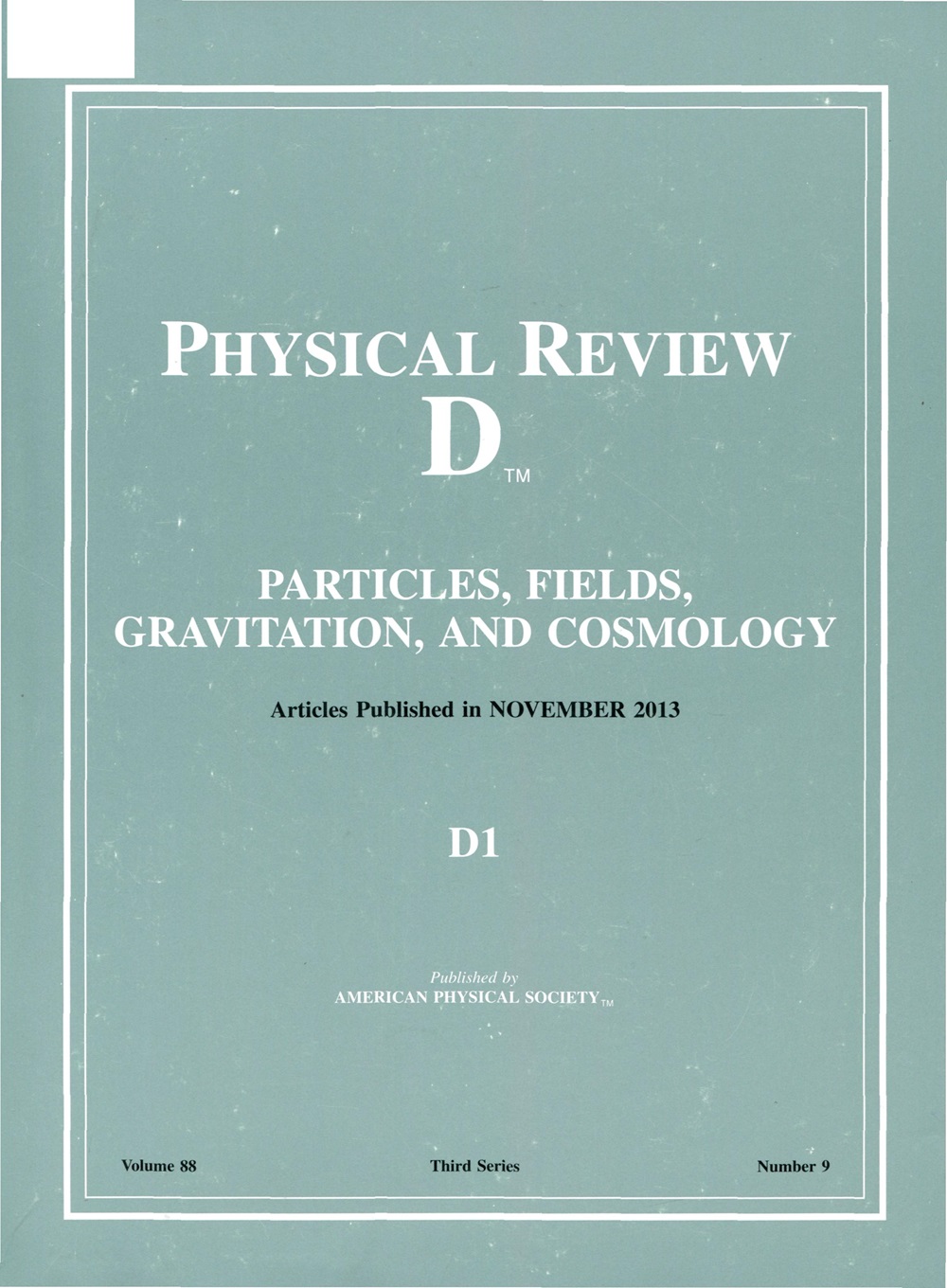Exploring effective actions of type I and type IIA string theories through T-duality
IF 5
2区 物理与天体物理
Q1 Physics and Astronomy
引用次数: 0
Abstract
It is well-established that compactifying type I string theory on a circle S(1) transforms the theory under T-duality into type I’ theory; the compactification of type IIA string theory on the orbifold通过t二象性探索I型和IIA型弦理论的有效作用
证明了在圆S(1)上紧化I型弦理论将t对偶下的弦理论转化为I型弦理论;IIA型弦理论在S ~ (1)/Z2轨道上的紧化,其中Z2作用结合了沿对偶圆S ~(1)的世界表宇称和时空反射。我们提出,在紧化之后,I型有效作用的非扭曲(扭曲)扇区应在Buscher规则下映射到I型有效作用的非扭曲(扭曲)扇区。这种t二象性约束为确定IIA型有效作用中的玻色子耦合提供了重要的见解,特别是那些在轨道还原后仍然存在的玻色子耦合,以及I型有效作用的非扭曲部分。然而,其范围有限,不足以完全确定第一类和第一类理论的扭曲扇区内的耦合。在这个框架内,我们证明了I型非扭曲扇区的二阶导数耦合和IIA型理论中的二阶导数耦合是唯一确定的,除了IIA型中的chen - simons项,它在轨道约化中不存在。2025年由美国物理学会出版
本文章由计算机程序翻译,如有差异,请以英文原文为准。
求助全文
约1分钟内获得全文
求助全文
来源期刊

Physical Review D
物理-天文与天体物理
CiteScore
9.20
自引率
36.00%
发文量
0
审稿时长
2 months
期刊介绍:
Physical Review D (PRD) is a leading journal in elementary particle physics, field theory, gravitation, and cosmology and is one of the top-cited journals in high-energy physics.
PRD covers experimental and theoretical results in all aspects of particle physics, field theory, gravitation and cosmology, including:
Particle physics experiments,
Electroweak interactions,
Strong interactions,
Lattice field theories, lattice QCD,
Beyond the standard model physics,
Phenomenological aspects of field theory, general methods,
Gravity, cosmology, cosmic rays,
Astrophysics and astroparticle physics,
General relativity,
Formal aspects of field theory, field theory in curved space,
String theory, quantum gravity, gauge/gravity duality.
 求助内容:
求助内容: 应助结果提醒方式:
应助结果提醒方式:


